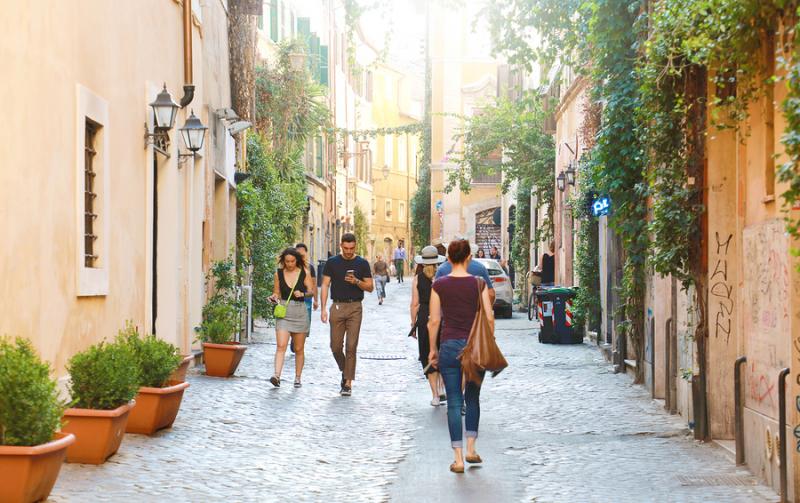Imagine not being able to describe how something tastes, or what it looks or sounds like? Imagine not being able to explain the colour, shape or features of something? Without adjectives, those little describing words we use every day, language wouldn’t be much fun.
When describing things in Italian, it can be confusing to work out where to put the adjective.
Should it go before or after the noun it describes? And what about if you want to use two adjectives? And are there any exceptions to the rules? Well it is Italian, so the answer is yes to that last question!
Let’s look at some general pointers that can help with getting your adjective word order spot on.
Positioning
In English, adjectives go before the word they describe. Whereas in Italian, they generally go after the word they describe:
Il fiore rosso – the red flower
Lo scherzo divertente – the funny joke
Il gatto magro – the skinny cat
Let’s look at some full sentences using adjectives following the noun:
L’italiano non è una lingua difficile – Italian isn’t a difficult language
Sei una persona generosa – You are a generous person
Oggi c’è un cielo azzurro – Today there is a blue sky
Ho un gioco nuovo – I have a new game
If the adjective is modified, you can be sure it always comes after the noun, for example:
Ha una casa molto pulita – He has a very clean home
È un uomo troppo gentile – He is an extremely kind man
Two adjectives
But what if you’d like to use two adjectives to describe the noun in your sentence? Well, you have some options.
One can go before the noun and one can go after. As a rule, the adjective that comes after the noun has more emphasis on it:
Ha una bella macchina veloce – He has a beautiful fast car
Un delizioso piatto italiano – A delicious Italian dish
Alternatively, if the adjectives have the same importance in the sentence then you can position both after:
Una matita lunga e colorata – a long and colourful pencil
Un uomo anziano e malato – an old and ill man
Before the noun
As always in language, there are some exceptions to the rules!
Certain common adjectives go before the noun, such as:
Anna è una cara amica – Anna is a dear friend
Sei una bella ragazza – You are a beautiful girl
Lei è una brava persona – She is a good person
È una brutt’idea – It’s a horrible idea
È una lunga strada – It’s a long road
Ho lo stesso problema – I have the same problem
Different meanings
You might be interested to discover that the positioning of the adjective can, in some cases, even change its meaning…
Il grande libro – the great book (masterpiece of literature)
Il libro grande – the big book
Una nuova macchina – a new car (to me)
Una macchina nuova – a new car (brand new)
Una vecchia amica – an old friend
Un’amica vecchia – an elderly friend













